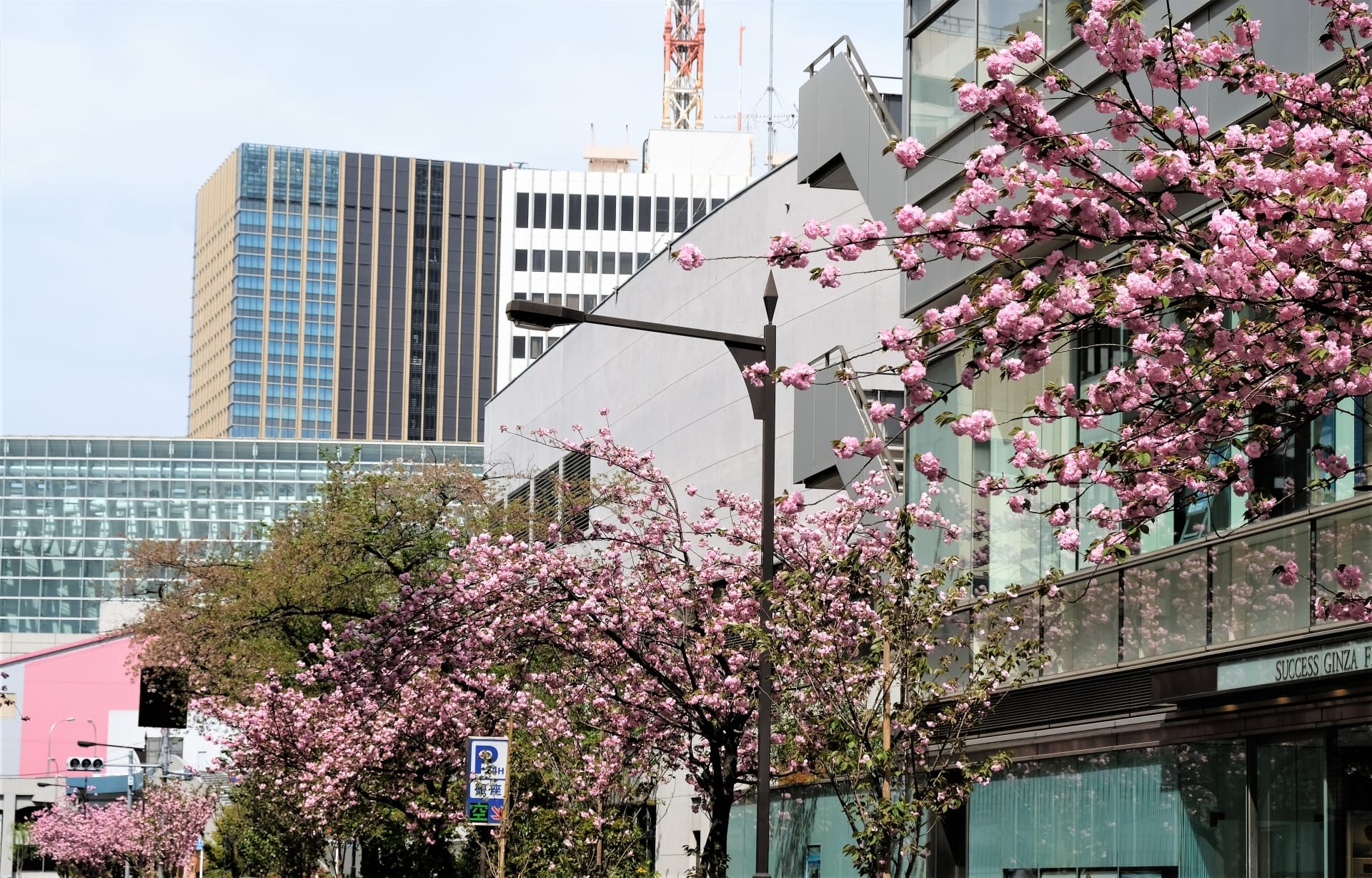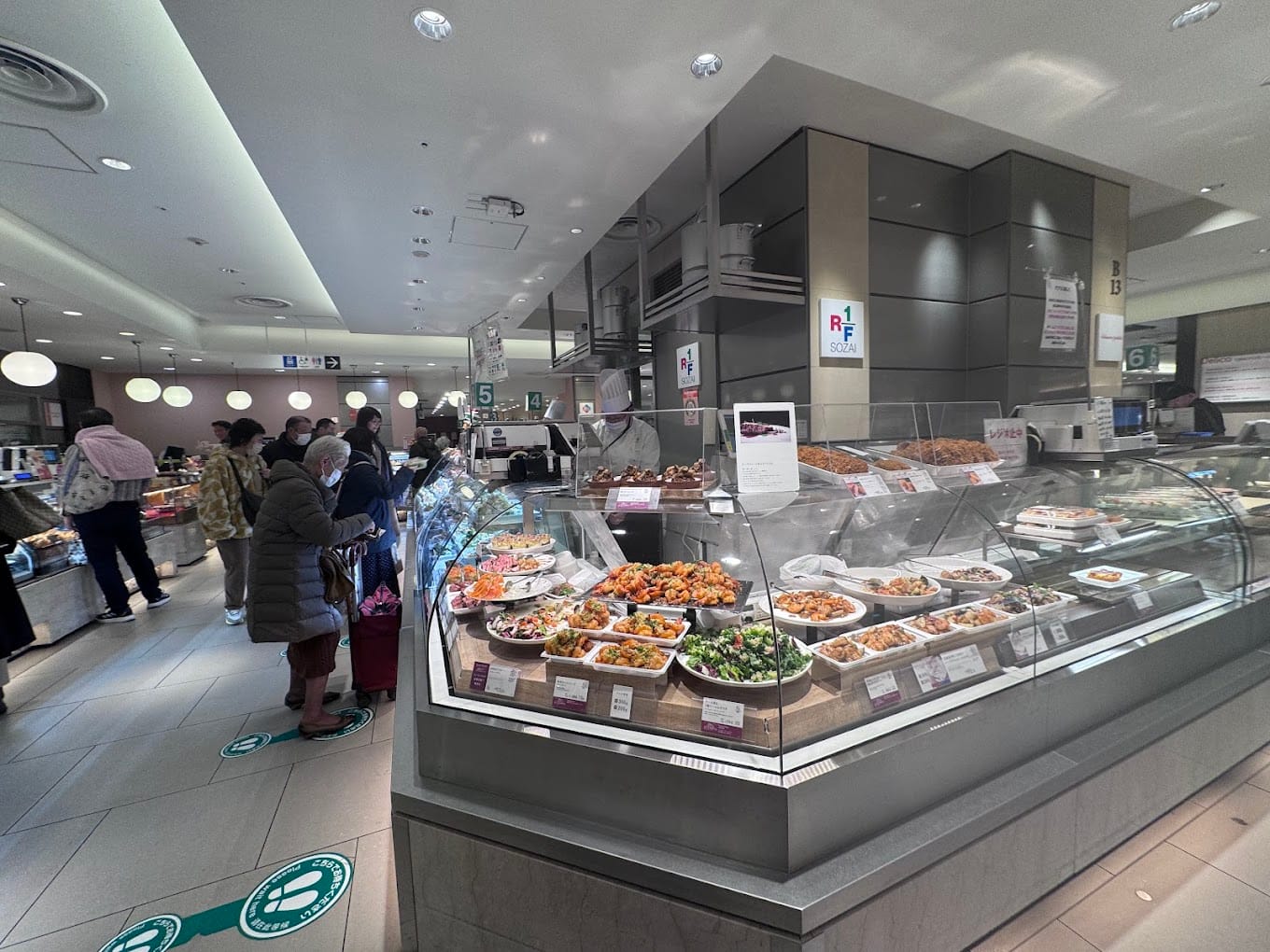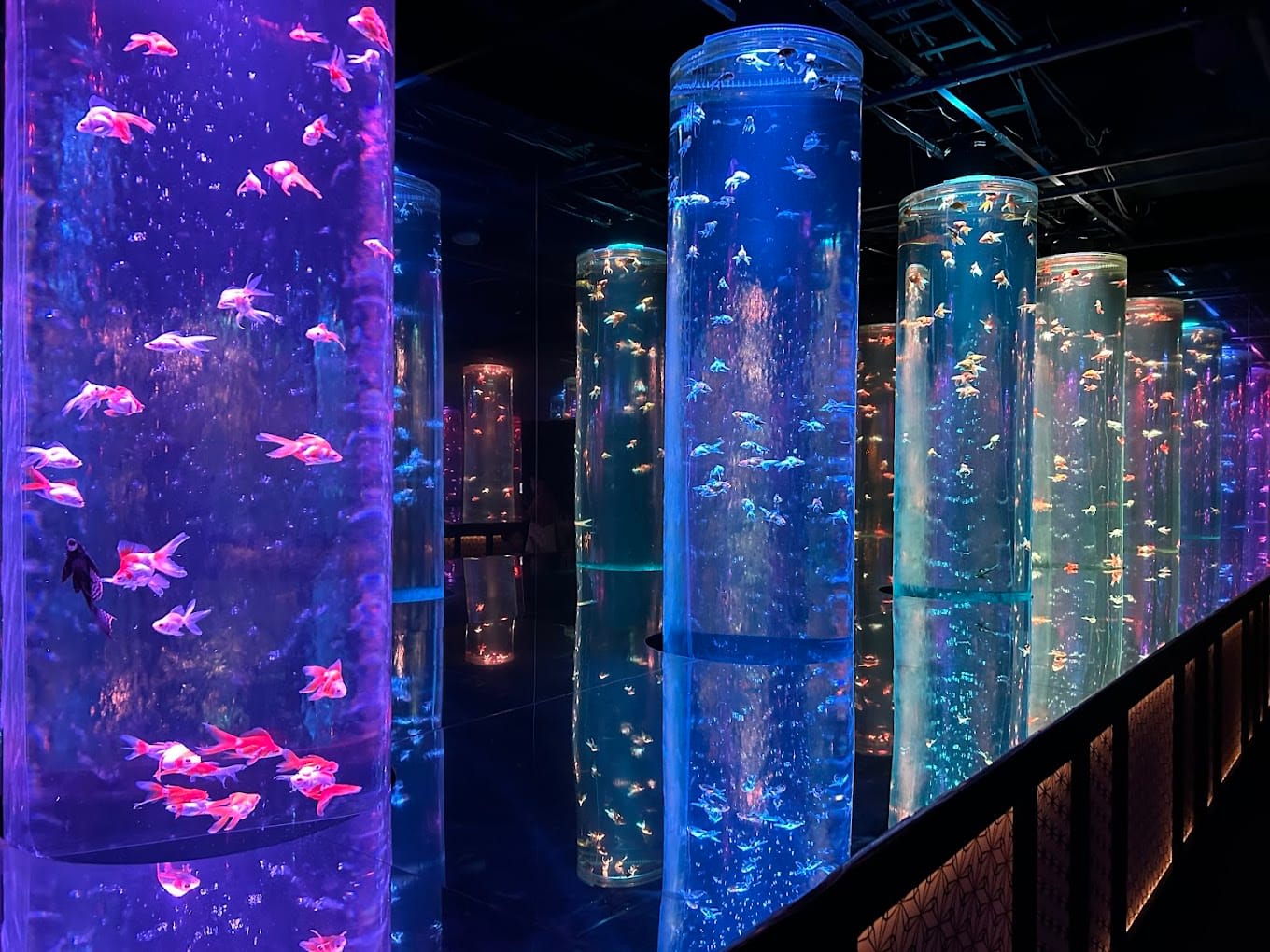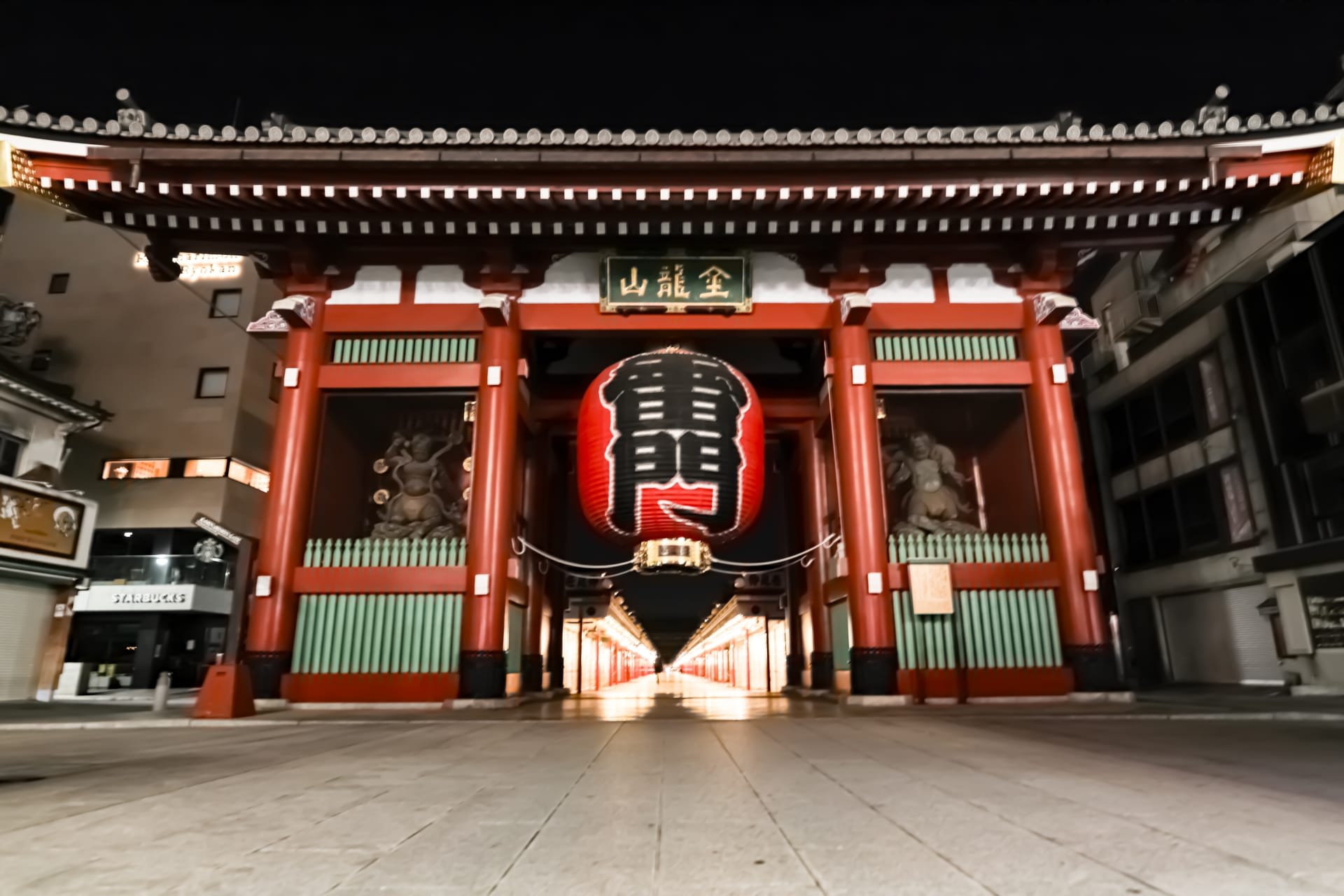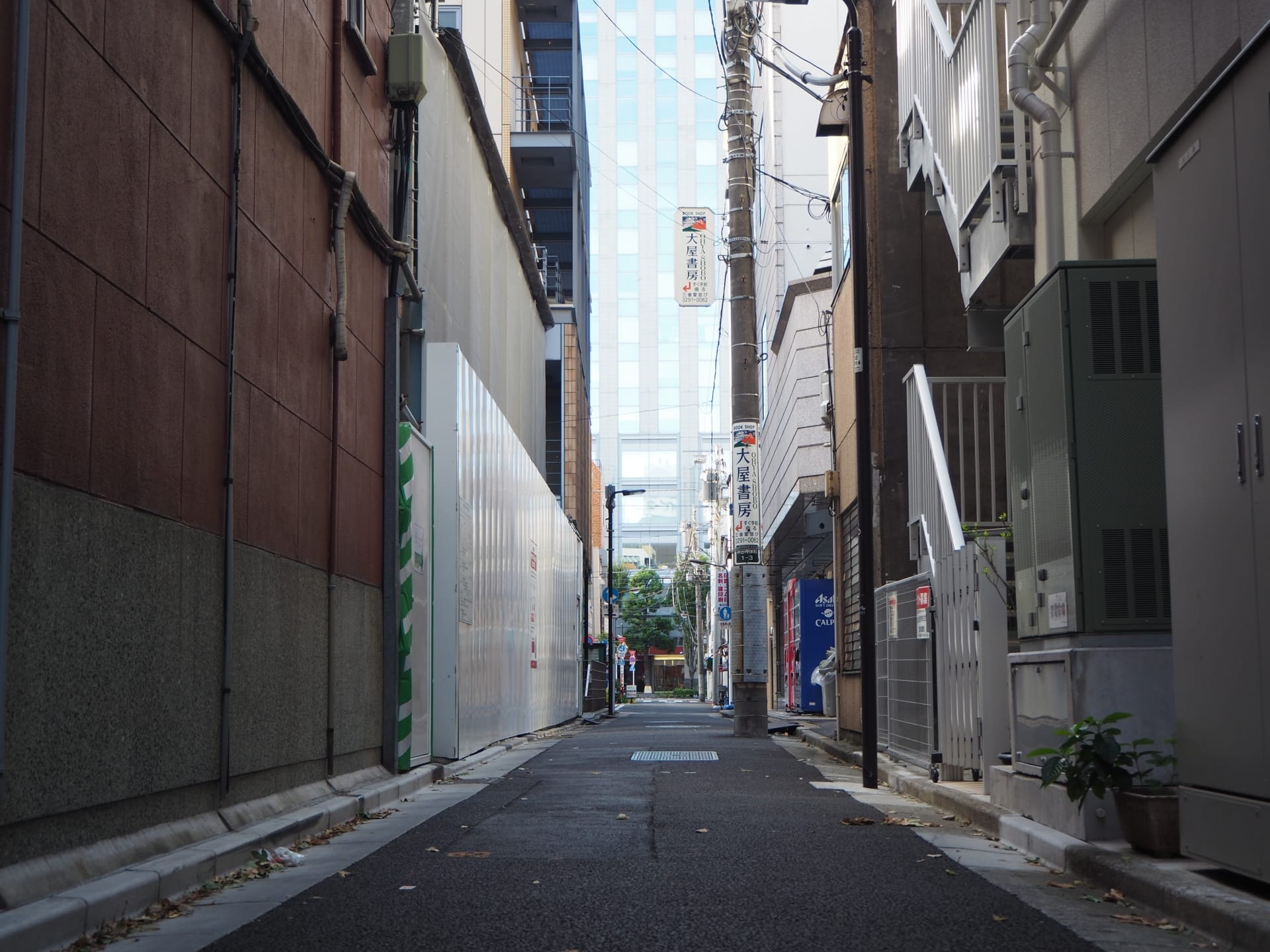Spring in Ginza 2025: Your Ultimate Guide to Tokyo's Most Elegant District
Spring in Ginza is one of the most enjoyable seasons for strolling around the city.
As someone born and raised in Tokyo, I feel the charm of this city when I walk down the streets lined with long-established Japanese confectionery stores and suddenly look up to see cherry blossoms reflected in the high-rise buildings.
While weekends are bustling with tourists, on weekday mornings, you can take a leisurely stroll in front of Mitsukoshi or Wako, experiencing the sophisticated atmosphere unique to Ginza. From Japan's premier shopping district to seasonal tastes, art, and traditional performing arts, spend a spring day in Ginza in your own enjoyable way.
If you want to taste Ginza's spring cuisine, I recommend using MagicalTrip's "Finest Quality Sushi & Tempura Tour" or "Wagyu Beef & Sake Paring Foodie Tour". Additionally, MagicalTrip offers various tours in Tokyo's main areas.
This article also introduces the attractions of these tours, so please use them for your spring Ginza sightseeing!
Table of Contents
・Spring Highlights in Ginza
・Cherry Blossom Spots in Ginza
・Spring Gourmet in Ginza
・Spring Events in Ginza
・Recommended Tours in Ginza
・Frequently Asked Questions About Spring in Ginza
Spring Highlights in Ginza
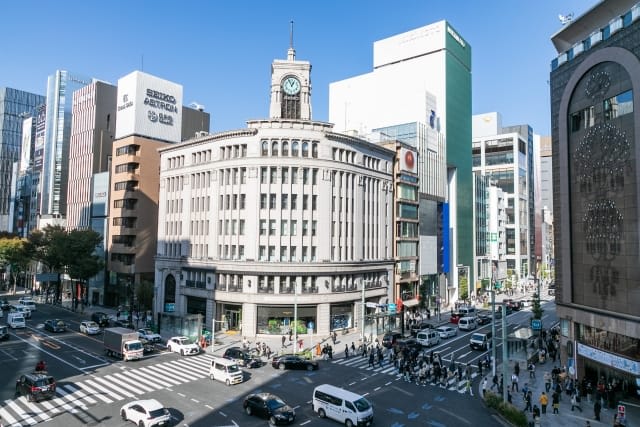
Ginza, one of the world's premier shopping districts, becomes adorned with cherry blossom decorations throughout the entire area in spring. The window displays of luxury brand stores change to spring-like decorations, making the whole street feel like one giant art gallery.
My favorite is viewing the lit-up cherry blossom decorations at dusk. The contrast between the neon signs and cherry blossoms creates a scenery unique to Ginza that feels urban yet evokes the atmosphere of Japanese spring.
Spring collections are displayed in street-level stores and department stores, allowing you to enjoy the latest fashion. The show windows of Mitsukoshi and Matsuya are particularly worth seeing. The sight of spring collections from Japanese designer brands to world-renowned luxury brands gathered in one place is breathtaking.
Limited-time menus and events themed around spring at various locations in Ginza are also unique pleasures of this season. High-end restaurants offer special courses using spring ingredients, and cafes line up cherry blossom-themed sweets.
Spring in Ginza is also the perfect season for taking photos. There are countless Instagram-worthy spots, such as the contrast between high-rise buildings and cherry blossoms, and the harmony between the sophisticated cityscape and spring decorations.
Cherry Blossom Spots in Ginza
There are several wonderful spots around Ginza where you can enjoy cherry blossoms in an urban atmosphere. When I guide local friends or acquaintances from overseas, I always visit these places. Each has a different charm, allowing you to enjoy the diverse expressions of spring in Ginza.
Hibiya Park
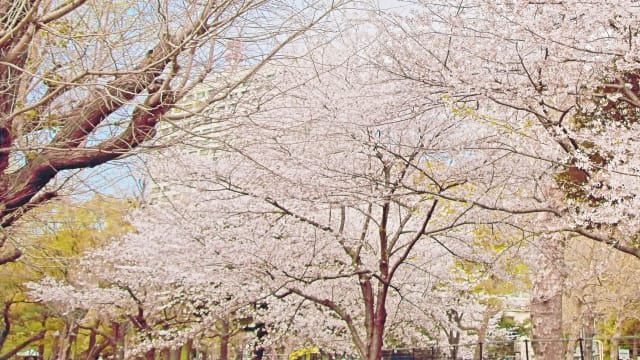
Hibiya Park, one of Tokyo's finest cherry blossom viewing spots with about 40 cherry trees in full bloom, becomes crowded with many people in spring. On the spacious lawn, you can see people enjoying hanami picnics.
For me too, having a hanami picnic with homemade bento boxes with my friends is an annual pleasure. The time spent leisurely eating under the cherry blossoms is a special moment that makes you forget the hustle and bustle of the city.
The cherry blossoms in Hibiya Park are typically at their best from late March to early April. If you visit early in the morning on a weekday, you can quietly enjoy the cherry blossoms illuminated by the morning sun. Weekends are crowded with many people, so I recommend visiting on a weekday if you want to enjoy the cherry blossoms leisurely.
Hamarikyu Gardens
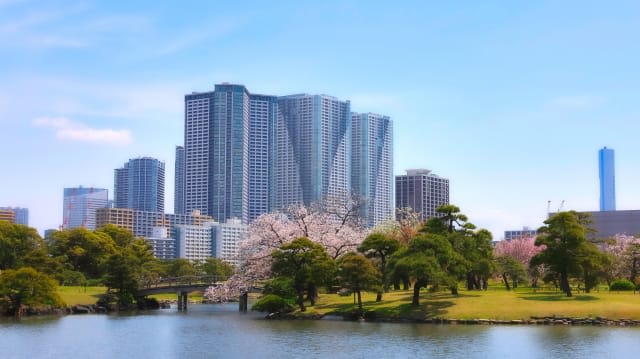
Hamarikyu Gardens, where about 80 cherry trees bloom beautifully, exudes a special charm in spring. When I guided my camera-loving overseas friends, they were moved by the combination of the beauty of the Japanese garden and the cherry blossoms, taking many photos. Especially, the cherry blossoms blooming around the tidal pond are spectacular, including their reflection on the water surface.
The charm of Hamarikyu Gardens also lies in its historical value. It's a precious experience to enjoy the garden, which has been inherited from the Edo period, in its spring attire. As you stroll through the garden, imagining that the shoguns of the past enjoyed the cherry blossoms in the same way, you can feel the depth of Japanese culture that transcends time.
The best time to view cherry blossoms is typically from late March to early April, but since there are various types of cherry trees in the garden, from early-blooming Kawazu cherry blossoms to late-blooming Yaezakura, you can enjoy cherry blossoms over an extended period. My recommendation is the cherry blossoms around the tidal pond. If you visit at high tide, the sight of cherry blossoms blooming just above the water surface is breathtaking, creating a fantastical landscape as if the cherry blossoms are floating on water.
Ginza Sakura Street
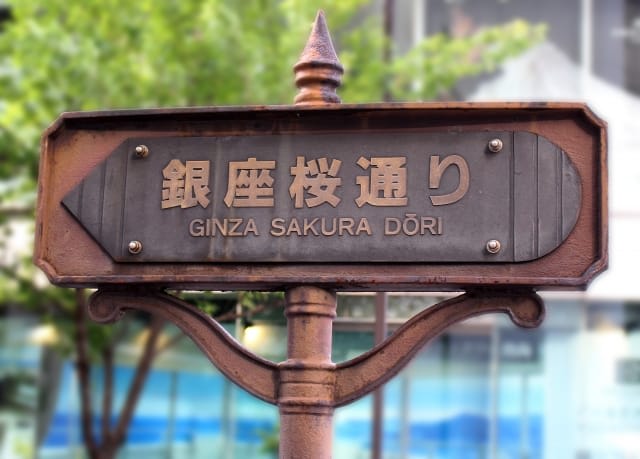
Ginza Sakura Street, known as a beautiful photo spot for the contrast between high-rise buildings and cherry blossoms, captivates many people. When I guided friends from overseas, they were also amazed by this unique landscape.
A characteristic of Ginza Sakura Street is that double-flowered cherry trees are planted. These bloom later than the common Somei Yoshino, reaching their peak from early April onwards. Therefore, you can enjoy the spring atmosphere here even after the cherry blossom season has ended at other spots. I myself look forward to walking down this street on my way home from work, grateful to be able to enjoy cherry blossoms until late in the season every year.
At night, the cherry blossoms illuminated by street lights create a fantastical atmosphere. It has a different charm from daytime, and it's bustling with people enjoying the night cherry blossoms. Especially, the scenery created by the lit-up cherry blossoms and the surrounding neon signs gives a sense of the urban spring atmosphere unique to Ginza. For photography enthusiasts, I recommend taking photos from dusk to night.
Spring Gourmet in Ginza
Ginza is a gourmet city representing Japan. Especially in spring, special seasonal menus and dishes using seasonal ingredients are offered at various stores, attracting food lovers. I myself look forward to encountering new flavors in this season. From Japanese sweets to haute cuisine, Ginza's spring gourmet scene is truly diverse.
High-end Japanese Confectionery Shops
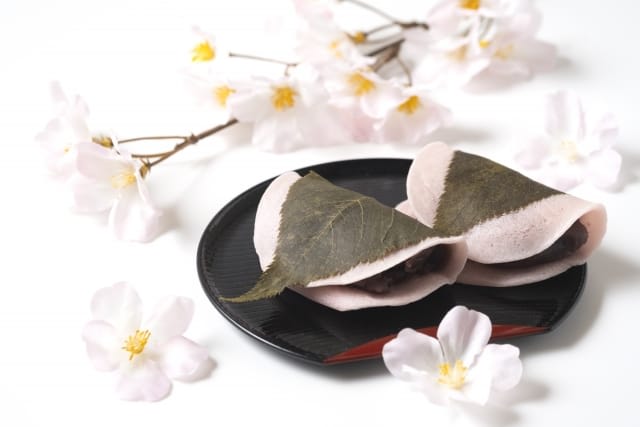
At the long-established Japanese confectionery shop "Ginza Kikunoya," sakura mochi and spring-limited Japanese sweets appear in the storefront in spring. My favorite is the sakura mochi, which gently spreads the scent of cherry blossom leaves. When I take a bite, the flavor of Japanese spring spreads throughout my mouth, calming my heart. Also, the spring-limited Japanese sweets, with their delicate craftsmanship and seasonal taste, truly make you feel the skills of Japanese artisans.
At "Toraya," you can enjoy seasonal limited yokan and tea sets. When I guided friends from overseas, they couldn't hide their surprise at the smooth texture and deep flavor of yokan. Spring yokan often features motifs of cherry blossoms and fresh greenery, and they are beautiful to look at. Enjoying them with tea provides a luxurious time to fully savor Japanese spring.
At "Kanou Shoujuan," fresh sweets with cherry blossom motifs are popular. I look forward to their sakura mochi every year. The balance between the scent of cherry blossom leaves and the elegant sweetness is exquisite, making you feel the arrival of spring.
At these high-end Japanese confectionery shops, you can not only taste delicious Japanese sweets but also experience Japanese traditional culture and seasonality. The atmosphere in the stores and the customer service are also sophisticated, allowing you to experience the luxury unique to Ginza. When visiting Ginza in spring, please enjoy the taste of Japanese spring at these confectionery shops!
Michelin-starred Restaurants
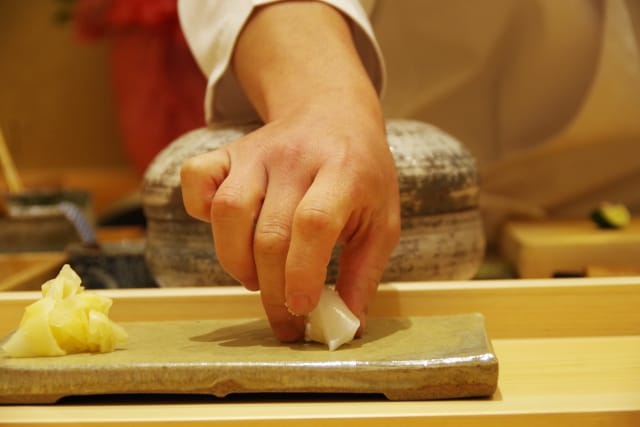
Ginza has many Michelin-starred restaurants, and special menus appear in spring. I always visit these restaurants on special days. Their exceptional cuisine and refined service create unforgettable memories.
"Ginza Kyubey" is one of Japan's representative sushi restaurants. In spring, they offer a spring-limited course here.
"Harutaka" is known for its innovative sushi and seasonal dishes. In spring, a special nigiri course appears, where you can enjoy nigiri using spring ingredients such as cherry blossom sea bream. When I guided friends from overseas, they were impressed by the delicacy of Japanese ingredients and the skill of the chefs.
"Sukiyabashi Jiro" also has a popular spring special nigiri course. Dining here is truly worthy of being called the art of sushi. The spring course uses ingredients that evoke the scent of spring, such as cherry blossom sea bream.
At these restaurants, you can also enjoy seasonal pairing menus. Drinks selected to match the dishes, such as sake or white wine, further enhance the meal. My recommendation is pairing with spring sake. Enjoying sake with a floral scent along with sakura mochi and spring nigiri is truly a spring luxury.
Department Store Basement Gourmet
Source: Google Map
The basement food floors of Ginza department stores, known as "depachika," are treasures of Japanese food culture. Especially in spring, seasonal limited products and special events themed around spring are held, attracting food connoisseurs. For me, stopping by the depachika on my way home from work to choose dinner or souvenirs has become a daily routine.
At Ginza Mitsukoshi, a special bento fair is held in spring. What I particularly look forward to is the "Spring Excursion Bento" fair, where famous stores from all over Japan set up stalls. Colorful side dishes using spring ingredients are packed in cute bento boxes with cherry blossom motifs.
For example, you can enjoy luxurious contents that allow you to taste spring flavors all at once, such as rice cooked with sakura shrimp, bamboo shoot tempura, and pressed sushi with cherry blossom sea bream. Taking these bento boxes for a hanami picnic in nearby Hibiya Park is one of my spring pleasures.
Each department store sells numerous limited-package souvenirs in spring. Products with beautiful packaging adorned with cherry blossom petals or sweets boxes with spring landscape motifs line up, enjoyable even just to look at. Every year, I look forward to buying these spring-limited souvenirs and sending them to family and friends living far away. Especially, sakura mochi and spring-limited Japanese sweets sets are popular among my overseas friends.
Spring Events in Ginza
Spring in Ginza is bustling with various events. From traditional performing arts to art exhibitions, diverse cultural events are held, filling the entire city with excitement. I myself participate in events almost every weekend in this season, fully enjoying spring in Ginza.
Kabukiza Theater Performances
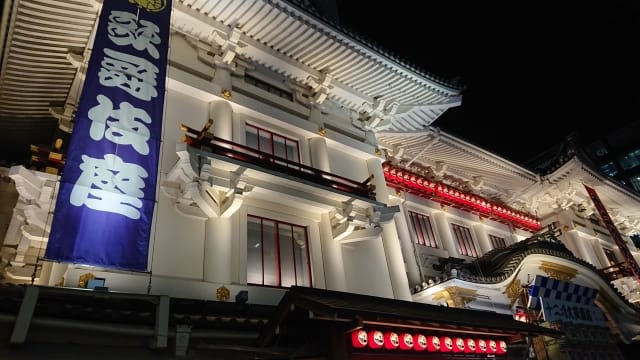
The Kabukiza Theater is one of Ginza's symbolic buildings and the home of Kabuki, a representative traditional Japanese performing art. For me, it's a special place I've visited with my family since childhood, and the spring performances are one of my annual pleasures. The regular spring performances feature plays with auspicious themes suitable for spring.
While Kabuki is a traditional Japanese performing art, it has become increasingly popular among foreign tourists in recent years. One of the reasons for this is the English subtitle tablet rental service. Thanks to this service, even those who don't understand Japanese can easily follow the story. When I guided my overseas friends, they were able to enjoy the story while being captivated by Kabuki's gorgeous costumes and unique acting style.
In spring performances, cherry blossom decorations are sometimes placed on the stage, allowing you to visually feel spring. Also, the seasonal Japanese sweets served during intermissions are one of the unique pleasures of spring. You can enjoy the taste of Japanese spring between performances with sakura mochi or hanami dango.
Art Exhibitions
Source: Google Map
Ginza has long been known as a city of art. Many galleries and museums gather here, constantly disseminating new art scenes. In spring, even more special exhibitions and planned exhibitions are held, coloring the entire city with art.
Each gallery holds special exhibitions of Japanese paintings and contemporary art themed around spring. The spring project exhibition by young artists is also not to be missed. Known as a place for discovering new talent, Ginza's galleries offer fresh surprises every year.
Art Aquarium is also a must-see event in spring Ginza. The fantastical space where beautiful goldfish and light art merge provides an experience as if you've wandered into another world.
Recommended Tours in Ginza
Ginza is Japan's premier upscale district and a place that fascinates many tourists. However, to fully enjoy its rich charm, local knowledge is essential. Therefore, I'd like to introduce two special tours provided by MagicalTrip. These tours are recommended for those who want to deeply experience Ginza's food culture.
Finest Quality Sushi & Tempura Dining Experience in Ginza
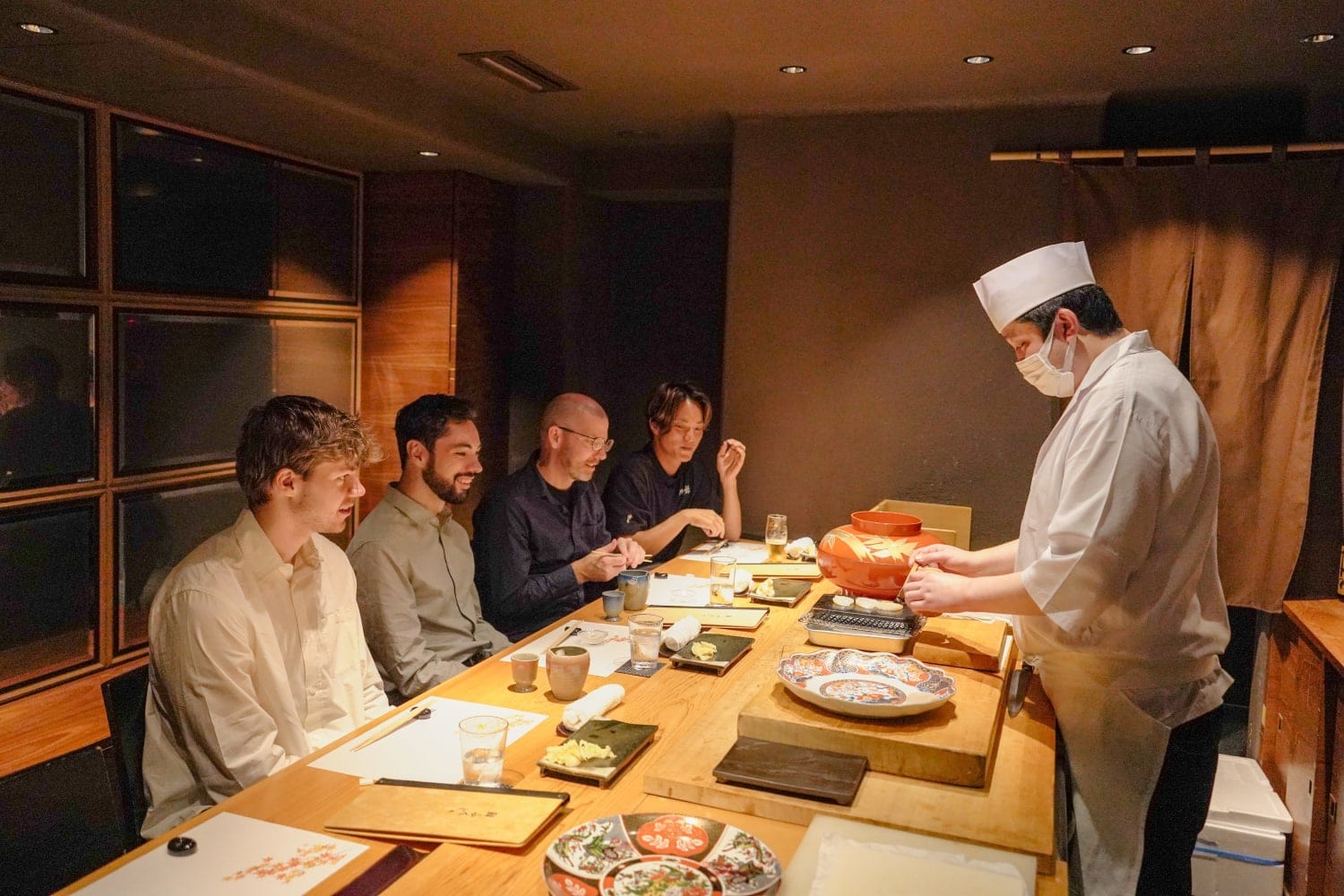
This tour visits stores that have received high ratings from Michelin and Tabelog. The fee is $203.41 (about 30,000 yen) per person, including four types of drinks. While it might seem expensive, it's a very reasonable price setting for a high-end dining experience in Ginza.
What's particularly noteworthy is that counter seats are guaranteed. You can enjoy special nigiri and tempura using seasonal ingredients while watching skilled artisans prepare them right in front of you.
Even if you're unsure about Japanese cuisine etiquette and manners, English-speaking guides will kindly support you, allowing you to relax and enjoy your meal.
It's a small-group tour, and solo travelers are also very welcome. Many couples and friends participate, and it's popular as an anniversary or special experience. Free cancellation is available up to 24 hours in advance, and date changes are possible, so you can feel secure even if your travel plans change.
Participation is possible from 12 years old and up, and vegetarian options are available with a prior request made by the day before. However, note that they cannot accommodate vegan, gluten-free, or shellfish allergy requirements.
Between meals, you'll also be guided through Ginza's streetscape, including shrines, high-end stores, and hidden bars. The content allows you to enjoy not only the food but also the atmosphere of Ginza, providing a comprehensive experience of Ginza's charms.
For more details: Finest Quality Sushi & Tempura Dining Experience in Ginza
Wagyu Beef & Sake Paring Foodie Tour in Ginza
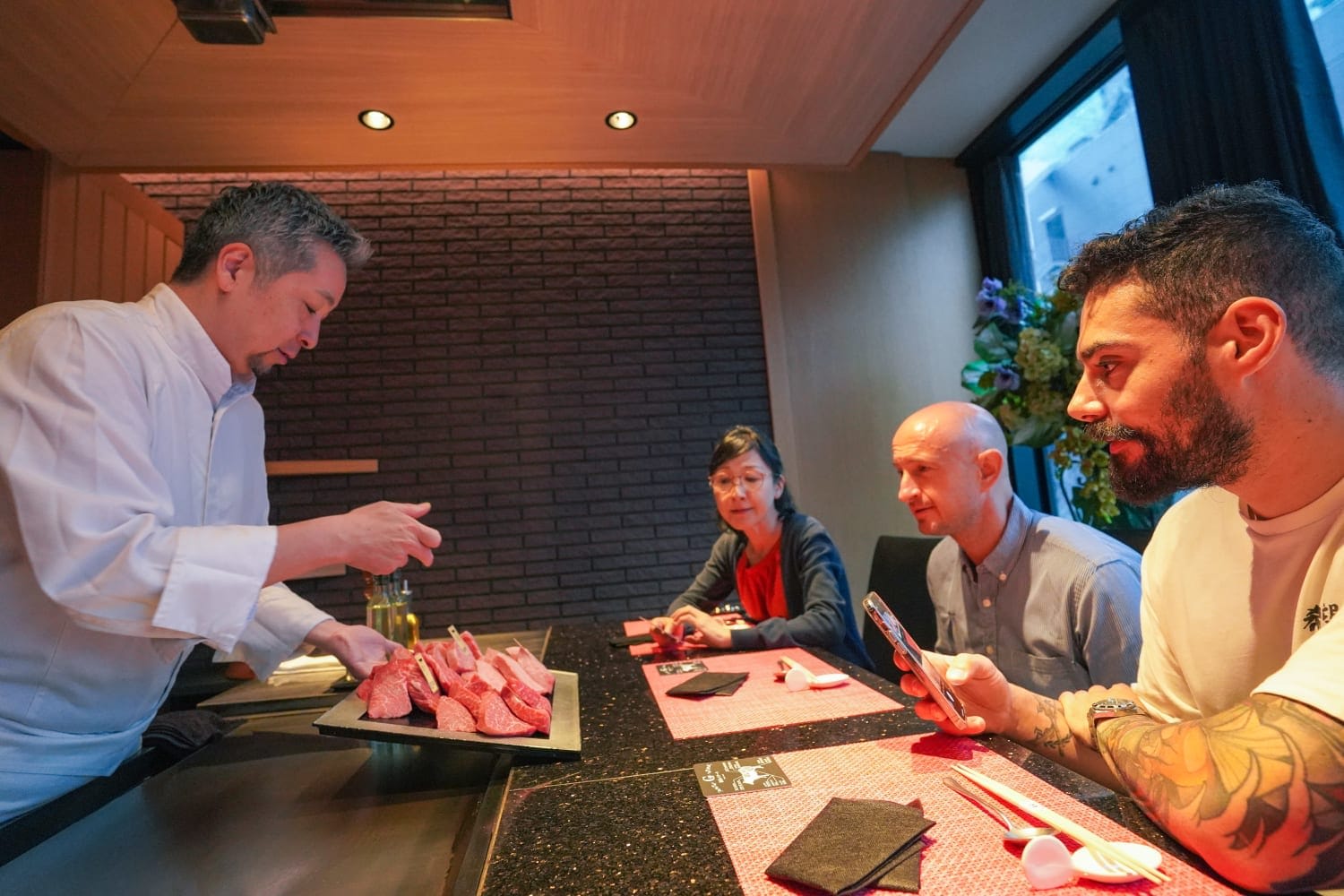
At $177.98 (about 26,000 yen) for 3.5 hours, this tour is slightly longer and more reasonably priced than the sushi and tempura tour. The main attraction is all-you-can-eat top-grade A5 rank wagyu beef and all-you-can-drink Nara sake.
The first stop is at Nara Prefecture's antenna shop, where you can enjoy about 20 types of local sake from Nara, known as the "birthplace of Japanese sake," for 30 minutes all-you-can-drink. For those who don't like sake, other drinks are also available, so don't worry.
The second stop is at a teppanyaki restaurant in Ginza, where you can order as much A5 rank wagyu as you like. Side dishes, seasonal soup, garlic rice, and miso soup are also provided, and you can choose wine or beer, so you can enjoy according to your preferences.
The meeting point for the tour is at the north exit of Shinbashi Station (near SL Square), and it ends near Ginza/Yurakucho Station. Along the way, you'll stroll through Ginza with your guide, learning about its history and culture, which is also attractive.
More than 100 people have already experienced it, and the reviews are highly positive. It's especially recommended for those who want to fully enjoy wagyu beef and Japanese sake, or those who want to enjoy Ginza's nightlife with a local guide.
At the end of the tour, you'll leisurely conclude with dessert and one drink at a cafe or bar. Like the previous tour, free cancellation is available up to 24 hours in advance, and date changes are possible, allowing for flexible responses to changes in your itinerary.
For more details: Wagyu Beef & Sake Paring Foodie Tour in Ginza
Frequently Asked Questions About Spring in Ginza
I'll answer questions that many people are curious about when enjoying spring in Ginza. As a local who has lived in Ginza for many years, I'll provide information based on actual experience.
When is the best time to see cherry blossoms in Ginza?
The best time to see cherry blossoms around Ginza is typically from late March to early April. In my experience, the last week of March to the first week of April is often the best season. However, this can vary depending on the weather. In years with a warm winter, they start blooming earlier, and in cold springs, they might be delayed.
Accurate bloom forecasts can be checked on Japanese weather forecast websites. While these sites are in Japanese, many often have English versions available, so foreign visitors can use them with peace of mind.
I recommend visiting 3-4 days after the forecast bloom date. This way, you're more likely to enjoy cherry blossoms close to full bloom. Also, since there are various types of cherry trees around Ginza, you can enjoy different types of cherry blossoms even if you visit at slightly different times.
What's the recommended attire for spring sightseeing in Ginza?
In March, you'll need outerwear, and in April, a light jacket is handy. March still has many chilly days, especially cold in the mornings and evenings. I usually wear a wool coat or down jacket. As we enter April, temperatures rise, and it gets warm during the day, but it's still cool in the mornings and evenings, so a light jacket that's easy to put on and take off comes in handy.
I recommend bringing something to wear over your clothes at night as temperatures drop. Ginza is bustling until late at night, but it can get chilly quickly after the sun sets.
Comfortable walking shoes are a must. Ginza is best enjoyed on foot, but there are also streets with steps. I always choose sneakers or walking shoes with good cushioning.
Some restaurants have dress codes. If you're planning dinner at a high-end restaurant, smart casual or even more formal attire might be required. For men, a jacket, and for women, a dress or skirt suit is safe.
How much budget is needed?
Lunch at high-end restaurants ranges from 5,000 yen to 20,000 yen. For example, lunch courses at Michelin-starred restaurants start from around 10,000 yen. At my favorite sushi restaurant, you can enjoy supreme nigiri for about 15,000 yen during lunch time.
On the other hand, light meals at cafes can be enjoyed from about 2,000 yen. Ginza also has many long-established coffee shops. For example, at "Café Paulista," you can enjoy a sandwich and coffee set for about 1,500 yen.
There are various options for shopping depending on your budget. Shopping at luxury brand stores can range from tens of thousands to hundreds of thousands of yen, but department stores also have plenty of souvenirs from a few thousand yen. I recommend high-quality Ginza-like miscellaneous goods or food items, which can be found for nice memories from 5,000 to 10,000 yen.
Entrance fees for tourist spots range from 500 to 2,000 yen. It's safe to budget about 1,000 yen per day for transportation costs. While Ginza is a relatively compact area, you might use trains or taxis if you extend your visit to surrounding tourist areas.
Overall, with a budget of 20,000 to 30,000 yen per day including meals, shopping, and sightseeing, you can sufficiently enjoy Ginza. Of course, if you're seeking more luxurious experiences, you might need a higher budget.
What's the recommended sightseeing route?
The popular course is a 15-minute walk from Tokyo Station to Ginza Station. Exiting from the Marunouchi side of Tokyo Station and walking with the Imperial Palace Outer Gardens on your right, you can feel the beauty of modern Japanese architecture. Taking a break at Wadakura Fountain Park along the way is also recommended.
I recommend department store tours like Matsuya and Mitsukoshi in the morning. If you start around 10:00 AM right after opening, you can enjoy shopping relatively comfortably without crowds. Especially, the basement food floors are important spots for understanding Japanese food culture.
For lunch, enjoy a meal at a long-established Ginza restaurant. In the afternoon, you can visit Kabukiza Theater and tour the surrounding cherry blossom spots.
From the evening, I recommend touring Ginza's high-end shopping area. Namiki Street, lined with flagship stores of brands like Chanel and Hermès, is beautiful with night illuminations and great for window shopping.
If you want to enjoy nightlife, I also recommend moving to other spots like Shinjuku or Shibuya. These areas, reachable in 15-20 minutes by train from Ginza, offer different faces of Tokyo at night.
This route is just an example, and of course, you can arrange it according to your interests and preferences. Since Ginza is a relatively compact area, it's also good to stroll at your own pace.
What are convenient access methods to the Ginza area?
It's a 5-minute walk from JR Yurakucho Station. If you're using the Yamanote Line or Keihin-Tohoku Line, this station is the most convenient. As soon as you exit the station, Ginza's cityscape spreads out, so even first-time visitors can arrive in Ginza without getting lost.
Ginza itself is closest to Ginza Station on the subway. Tokyo Metro's Ginza Line, Marunouchi Line, and Hibiya Line all stop here, allowing direct access from major areas in Tokyo. There are multiple exits in the center of Ginza, so you can choose the optimal exit according to your destination.
It's about a 10-minute taxi ride from Tokyo Station. Taxis are convenient if you have a lot of luggage or on rainy days. While Ginza is a relatively easy area to hail taxis, there might be long wait times during busy periods.
Many Toei Bus routes also operate. Especially, the bus stops near the Ginza 4-chome intersection serve as a hub where many routes stop. There are also many bus routes connecting major spots in Tokyo, which can be convenient for sightseeing.
There are also rental cycle stations. A system called "Community Cycle" has been introduced, which is economical for short-term use. However, be aware that there are no-riding areas in the busy central parts of Ginza.
I often walk from Tokyo Station to Ginza if the weather is nice. The route passing through the Marunouchi office district and Hibiya Park is a wonderful walking course where you can enjoy various aspects of Tokyo. It takes about 20-25 minutes, but if you walk slowly, taking photos and enjoying the scenery along the way, it can take about an hour.
Spring in Ginza is a special season where Japanese tradition and modernity blend beautifully. From cherry blossom viewing spots to high-end gourmet, traditional performing arts, and art exhibitions, various attractions are condensed. Every year when this season comes, I myself get excited to discover new charms of Ginza where I was born and raised.
For foreign tourists, it will be the best opportunity to experience the essence of Japanese culture. You can enjoy Japanese spring with all five senses, from seasonal limited sweets at high-end Japanese confectionery shops, special spring courses at Michelin-starred restaurants, to watching traditional performing arts at Kabukiza Theater.
Also, the dining tours provided by MagicalTrip are wonderful opportunities to understand and enjoy Ginza's food culture more deeply. Guided by local guides, you can experience dining at high-end restaurants that are usually difficult to experience and visit hidden famous restaurants in back alleys.
Spring in Ginza is a diverse city where you can enjoy various activities such as shopping, sightseeing, dining, and art appreciation. Please use the information introduced in this article as a reference to find your own spring in Ginza!
